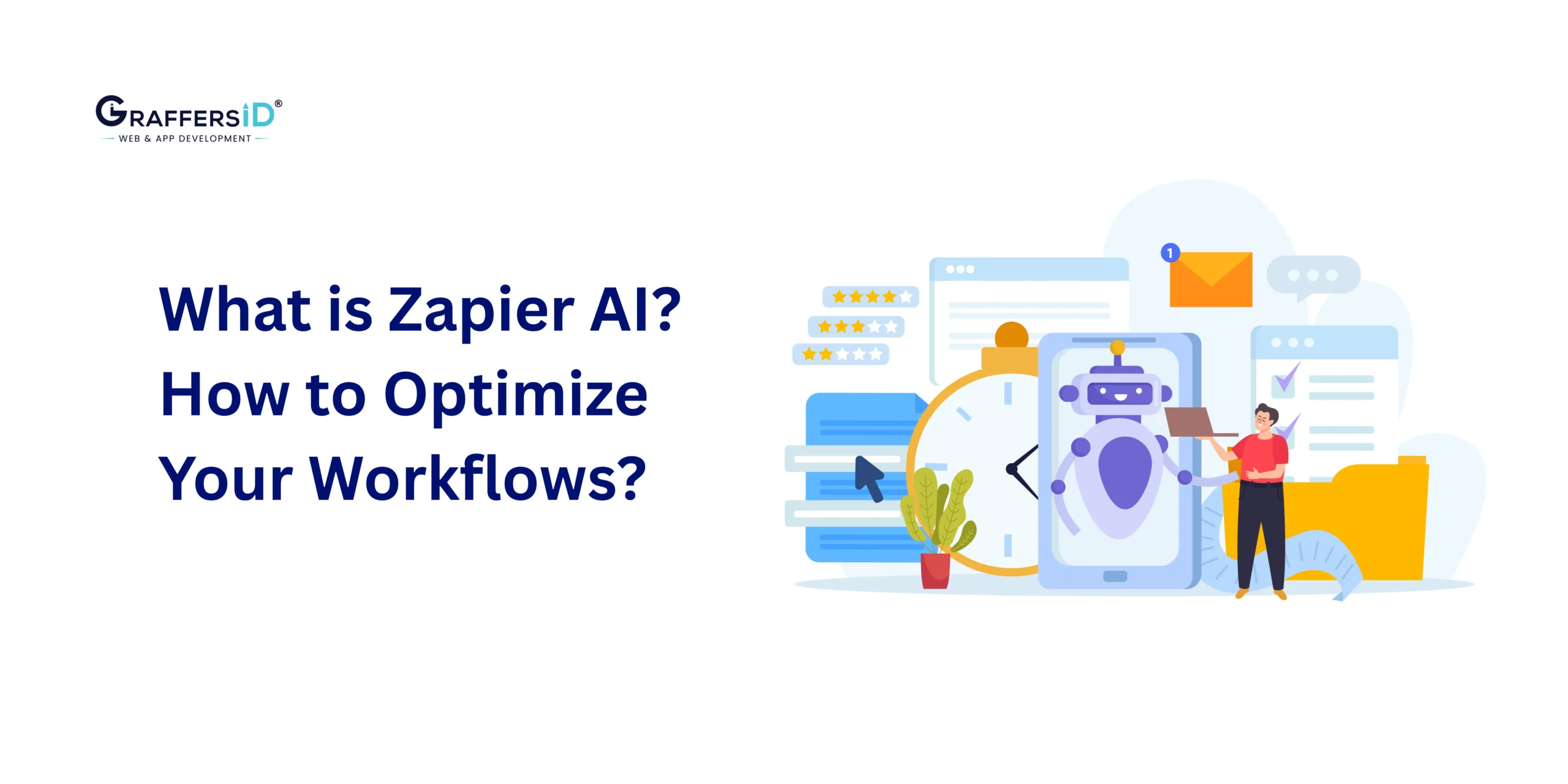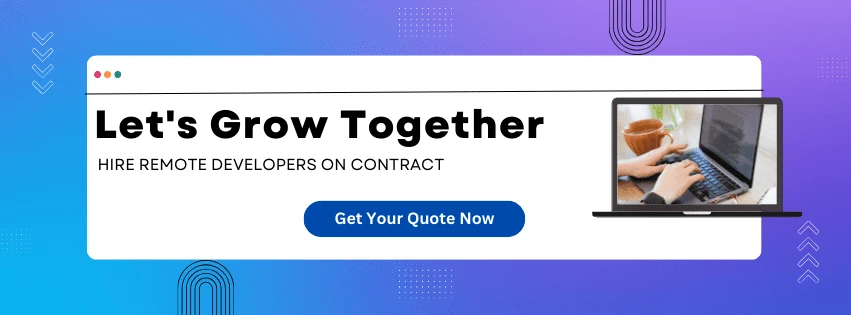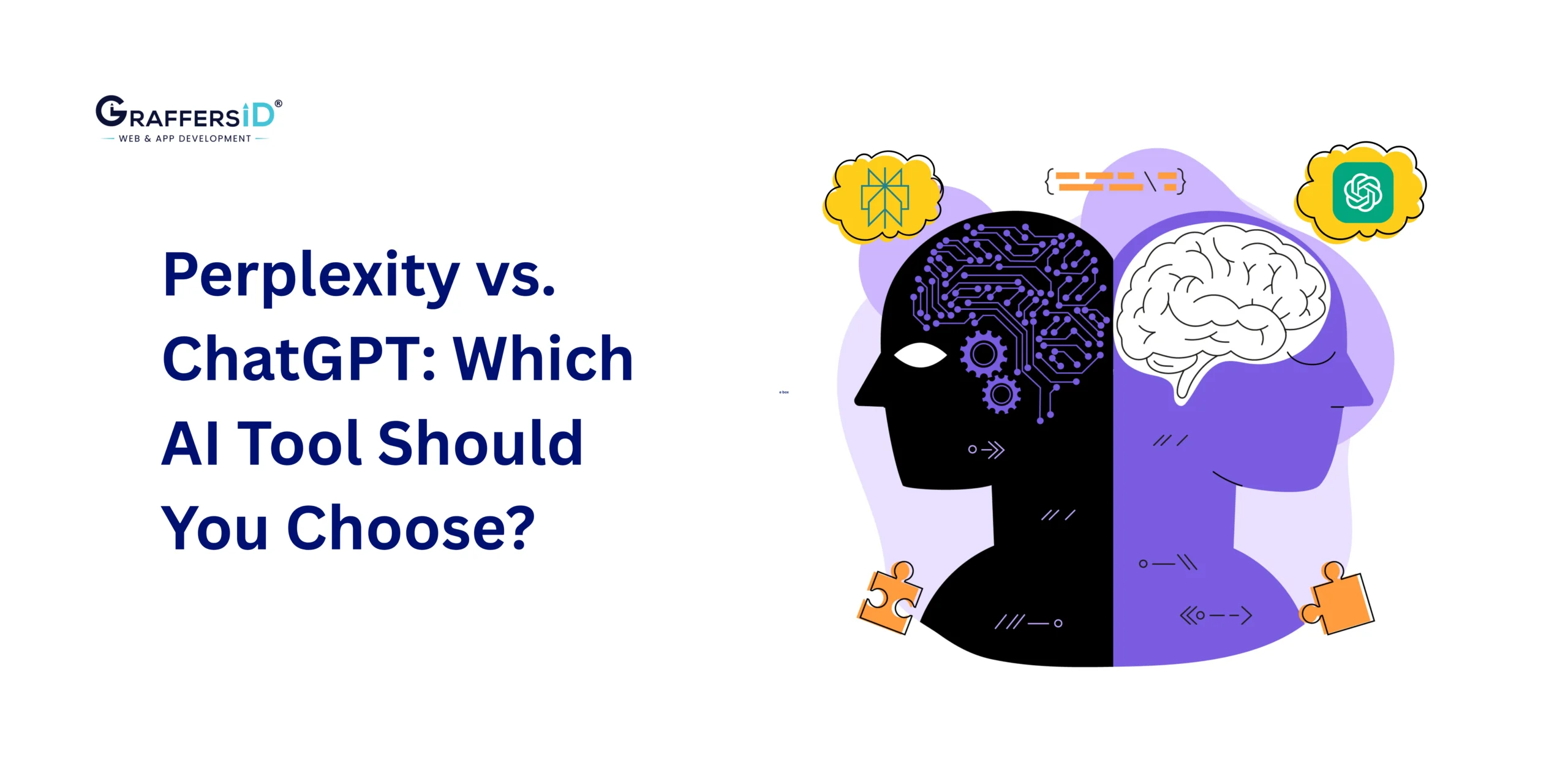In 2026, AI automation has evolved far beyond task execution; it now powers self-learning, intelligent workflows that can analyze data, make decisions, and optimize business processes in real time. The shift toward no-code AI platforms like Zapier is reshaping how companies operate.
Today, teams don’t need technical expertise or coding skills to automate end-to-end processes. With tools like Zapier AI, leaders can build systems that connect apps, streamline communication, and even reason like humans, turning everyday operations into autonomous, AI-driven workflows.
From startups managing client pipelines to global enterprises orchestrating multi-platform operations, Zapier AI Automation has become the go-to solution for organizations seeking speed, scalability, and efficiency without adding engineering overhead.
In this guide, we’ll explore how Zapier’s AI capabilities in 2026 empower decision-makers to:
-
Eliminate repetitive tasks through smart automation.
-
Design intelligent workflows using natural language.
-
Integrate thousands of apps smoothly with AI logic.
-
Build adaptive, no-code systems that continuously improve themselves.
By the end, you’ll understand how AI-powered automation with Zapier is helping businesses stay competitive in the era of agentic AI and no-code innovation and how you can leverage it to transform your own operations.
What is Zapier AI Automation?
Zapier AI is an advanced no-code platform that lets you connect apps, automate workflows, and now, with built-in AI, make your automations smarter, context-aware, and self-optimizing.
Instead of manually creating triggers and actions, Zapier’s AI can now understand intent, predict next steps, and adapt workflows automatically based on real-time data.
This makes it one of the most powerful tools for businesses looking to automate complex workflows without code while keeping human-like reasoning at the core.
Read More: Best Automation Software in 2025: Top Platforms to Streamline Workflows & Boost Efficiency
How Zapier AI Works (2026 Overview)?
Zapier’s AI engine uses natural language processing, machine learning, and predictive automation to understand the context of your tasks. It doesn’t just automate; it analyzes, decides, and optimizes workflows continuously.
Top AI Features of Zapier in 2026
Here are the latest AI capabilities that make Zapier a leader in no-code workflow automation:

-
AI Actions: Let Zapier’s AI decide which app or action to trigger based on your data, message tone, or user intent.
-
AI Steps in Zaps: Insert GPT-powered reasoning steps into your workflows, summarize emails, interpret data, or make smart routing decisions.
-
Autonomous Zaps: Self-learning workflows that monitor performance, detect issues, and optimize themselves without manual input.
-
Zapier Central AI: A single dashboard that gives real-time insights, AI-driven suggestions, and workflow analytics for better visibility and control.
These updates position Zapier as a leading no-code AI workflow platform, trusted by thousands of businesses to automate operations intelligently.
How Zapier AI Automates Workflows Without Code (2026 Guide)
In 2026, Zapier’s AI automation is redefining how businesses connect tools, automate tasks, and manage workflows, all without writing a single line of code.
By combining natural language processing, contextual reasoning, and predictive optimization, Zapier allows teams to automate complex business operations faster and smarter.
Here’s how it works:
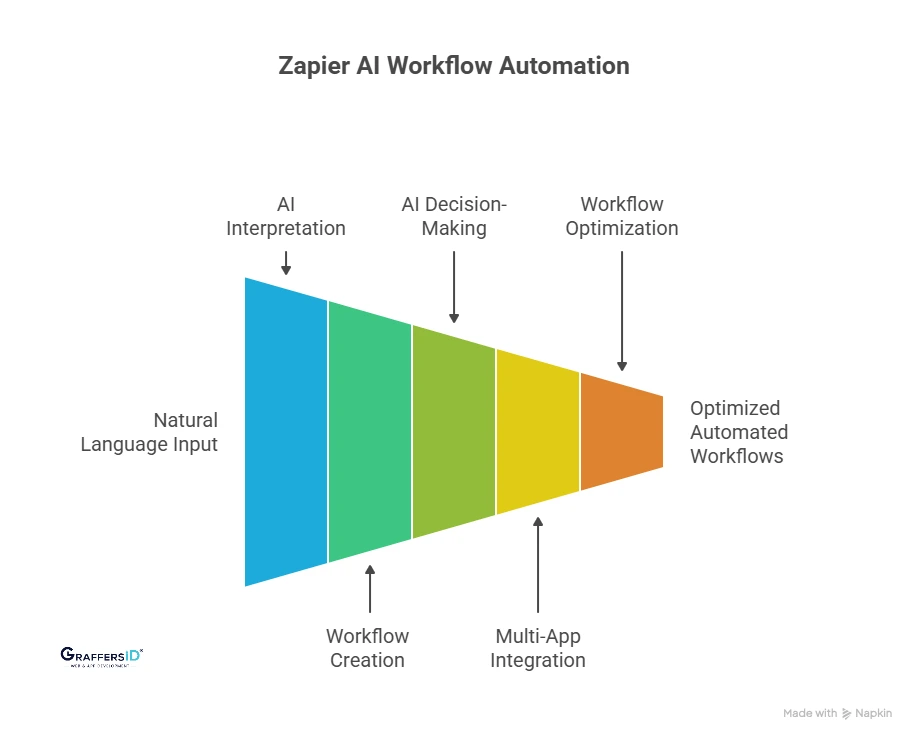
1. Build Workflows Using Natural Language
With Zapier AI Builder, anyone can create automation just by describing it in plain English. You no longer need coding or a step-by-step setup; Zapier’s AI understands intent and builds the workflow automatically.
Example: “Send me a Slack summary of all new leads from HubSpot every evening.”
Zapier’s AI interprets the request, identifies connected apps, and sets up the workflow within seconds.
2. Add AI Decision-Making to Workflows
Zapier’s AI doesn’t just follow static “if-this-then-that” logic anymore; it thinks contextually. It can analyze data, detect urgency, and make smart decisions in real time.
Example: If a customer message includes words like “urgent” or “pricing,” Zapier instantly routes it to the sales team via Slack.
If it’s informational, it logs the message into the CRM for later review.
3. Automate Complex Multi-App Processes
With support for over 6,000+ integrations, Zapier AI coordinates tasks across multiple platforms smoothly. It links apps used in sales, HR, marketing, and operations, turning disjointed tools into a connected, intelligent ecosystem.
Example Workflow: New email → Automatically create CRM entry → Send notification on Slack → Generate Notion summary → Add data to Google Sheets report.
4. Optimize Workflows with Predictive AI
Zapier now includes AI-driven workflow optimization, which learns from user behavior and automation data. The system identifies redundant steps, bottlenecks, and opportunities to improve efficiency.
Example:
If Zapier notices that a certain automation is rarely triggered or takes longer to execute, it recommends optimizations or suggests merging it with another workflow.
Best Use Cases of Zapier AI Automation for Businesses in 2026
Here are the most common real-world use cases where teams are seeing measurable impact:

-
Sales and Lead Management: Zapier AI automatically captures leads from multiple channels, analyzes intent using sentiment AI, and sends real-time alerts for high-potential leads. This leads to faster follow-ups, reduced response time, and higher conversions.
-
HR and Recruitment: Automate resume screening, candidate sorting, and interview scheduling without human effort. Zapier AI connects tools like Gmail, Google Calendar, and Notion to create an intelligent recruitment workflow that saves hours every week.
-
Marketing and Campaign Management: Use Zapier AI to create, publish, and track personalized campaigns across platforms. From generating AI-powered content to syncing analytics, marketers now automate reporting and optimization in real time.
-
Customer Support and Operations: Zapier AI identifies sentiment in customer messages, prioritizes urgent cases, and generates automated summaries or replies in tools like Zendesk and Slack. Teams resolve issues faster and deliver more consistent customer experiences.
Why Businesses Are Adopting Zapier AI Automation in 2026
Here are the key benefits of Zapier driving rapid adoption:
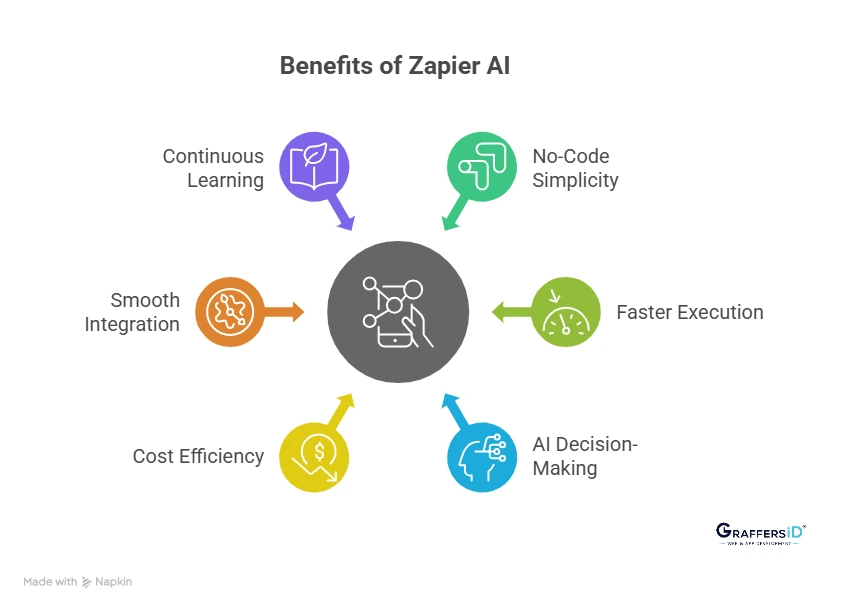
- No-code simplicity: Zapier allows teams to create and manage complex workflows without writing code. This enables non-technical departments to automate processes independently, reducing dependency on engineering teams.
- Faster execution: AI automation eliminates manual delays and repetitive work. Businesses can execute multi-step operations instantly, improving response times, accuracy, and overall team efficiency.
- AI-powered decision-making: Zapier’s AI can understand data context, prioritize actions, and make intelligent decisions automatically. This ensures workflows run smarter and adapt to changing business needs in real time.
- Cost efficiency: By automating human-intensive and repetitive tasks, businesses can significantly reduce labor costs and operational inefficiencies while reallocating resources to higher-value work.
- Smooth integration: Zapier connects with more than 6,000 apps, enabling smooth cross-department collaboration. Teams can unify sales, marketing, HR, and support tools into one connected workflow ecosystem.
- Continuous learning and optimization: Zapier’s AI continuously learns from workflow data to enhance accuracy and performance. Over time, it fine-tunes automations for better results with minimal human intervention.
Read More: What is n8n? Features, Use Cases & Pricing in 2025
Common Challenges of Using Zapier AI Automation in 2026
- Data privacy remains a top concern as businesses connect multiple apps through Zapier AI, making it essential to use secure integrations and access controls.
- As automations scale, teams often face workflow sprawl, so maintaining clear documentation and version control helps avoid duplication and confusion.
- While Zapier AI offers autonomous decision-making, human oversight is still crucial to ensure accuracy, compliance, and alignment with business goals.
Conclusion
As we move through 2026, Zapier AI Automation represents the next evolution in how businesses operate, where AI intelligence and no-code simplicity work together to create agile, efficient, and scalable workflows.
Enterprises are no longer limited by technical complexity; they can now automate decision-making, streamline operations, and integrate tools across departments, all powered by adaptive AI reasoning. This shift is enabling organizations to reduce manual workloads, accelerate productivity, and gain real-time insights faster than ever before.
For decision-makers, embracing AI-driven, no-code automation isn’t just a competitive advantage; it’s becoming a necessity to stay relevant in an AI-first economy.
At GraffersID, we help forward-thinking businesses design and deploy custom AI automation workflows using Zapier and other intelligent platforms.
Ready to build your AI-powered automation system?
Hire AI developers from GraffersID to streamline your workflows using intelligent automation solutions.
